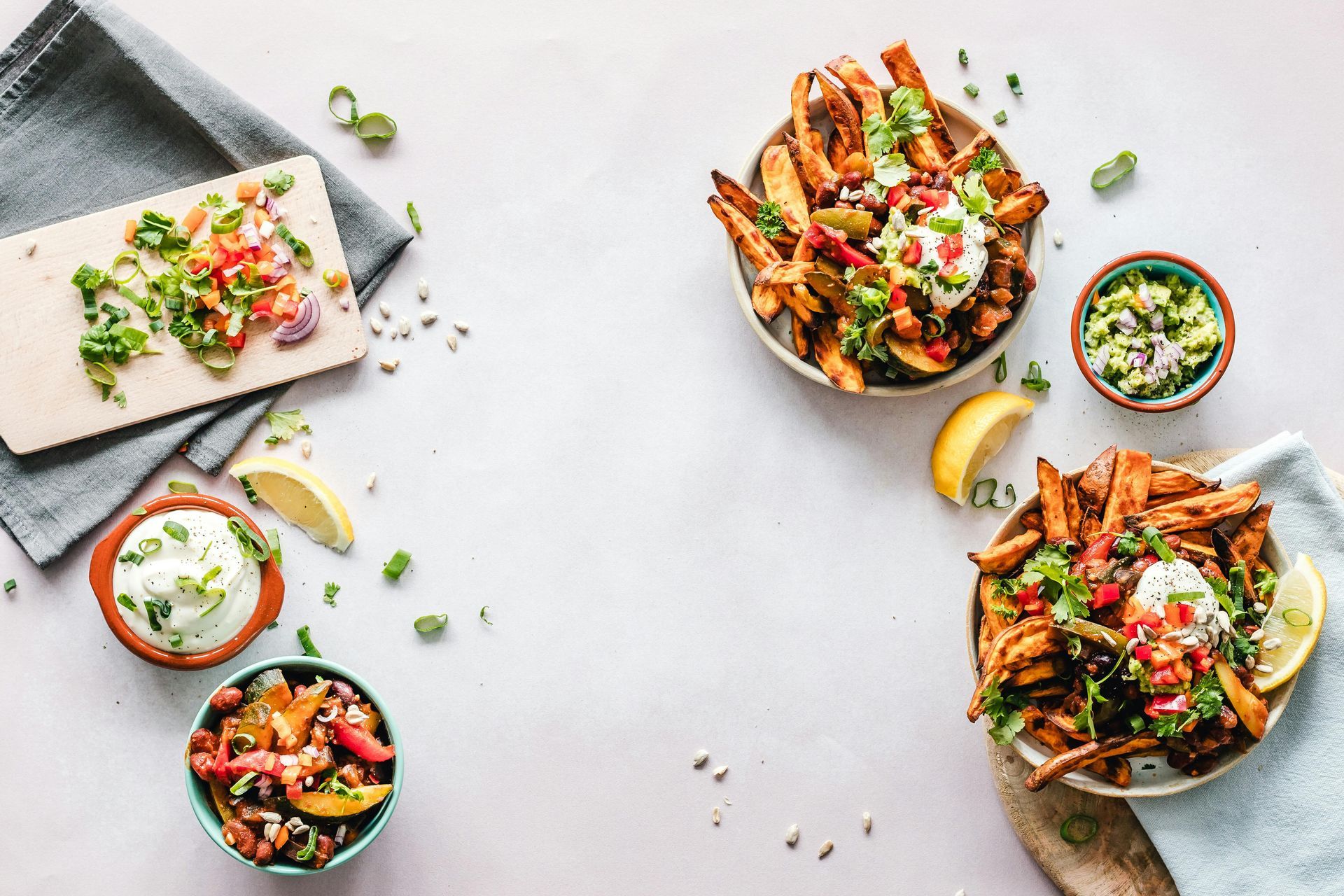Dream Chef Kitchen • October 9, 2025
The Necessity of Nutrients
What Do They Do & How Much Do We Need?

Fiber
- Why it matters: Higher fiber intakes are linked to lower cardiovascular disease risk.
- Several meta-analyses suggest risk drops as fiber goes up. PMC
- How much: About 14 g per 1,000 kcal (≈ 25 g/day for women, 38 g/day for men) from foods. PubMed
- Get it from: Beans, lentils, whole grains, nuts, seeds, vegetables, fruit.
Protein
- Why it matters: Supports muscle, immune function, and repair.
- How much (baseline): The RDA is 0.8 g/kg/day for healthy adults (more may be appropriate for older adults or athletes—work with a clinician or RD). PubMed
- Choose more: Fish, legumes/soy, eggs, poultry, dairy or lean meats.
Fats
- Quality over quantity: Favor unsaturated fats (olive/avocado/canola oils, nuts, seeds, fish).
- Limit saturated fat: Keep saturated fat under 10% of calories (Dietary Guidelines); the American Heart Association advises <6% for people who need to lower cholesterol. Dietary Guidelines
Carbohydrates
- Choose minimally processed sources—vegetables, fruit, legumes, and whole grains—for vitamins, minerals, and fiber that support steady energy and heart health. (See fiber section above for benefits.)
Sodium (salt)
- Aim low: Keep daily sodium under 2,300 mg (about 1 teaspoon of salt) for most adults. Dietary Guidelines
Added sugars
- Keep added sugars <10% of daily calories (that’s ≤50 g on a 2,000-calorie diet). Avoid added sugars for children under age 2. U.S. Food and Drug Administration
Seafood (omega-3s, vitamin D)
- Goal: At least 8 ounces per week of a variety of seafood (adjust for kids; choose low-mercury varieties if pregnant/breastfeeding). U.S. Food and Drug Administration


